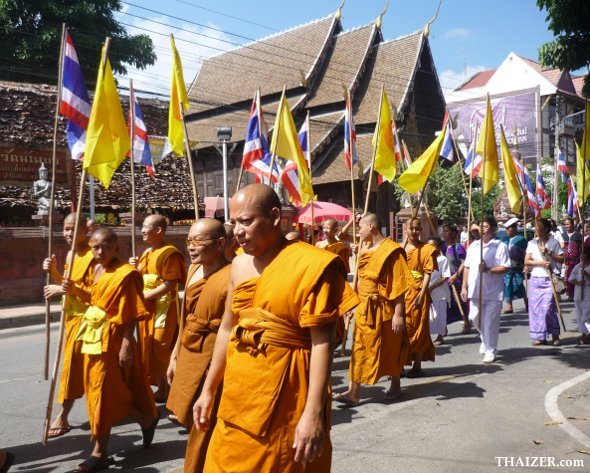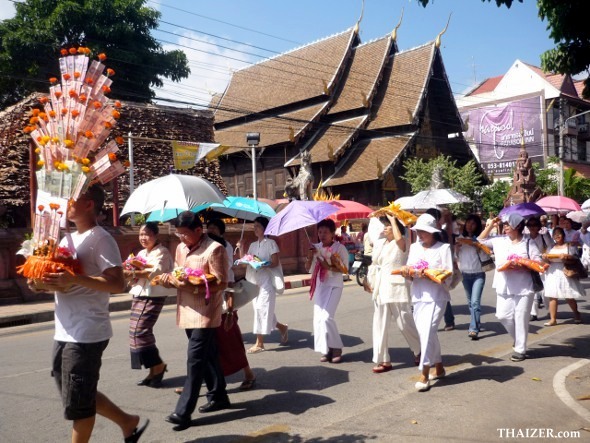Following the end of Buddhist Lent (Awk Phansa) new robes and offerings are made to the monkhood as part of the annual thod kathin or kathina ceremony. This ceremony often involves a procession of lay-people walking along a pre-arranged route to their designated temple whilst carrying the new robes. The procession will sometimes be headed by monks from the temple. There is no specific day for this to happen and will depend on arrangements at individual temples, but the kathin ceremonies are only allowed take place within a one-month period from the end of Buddhist Lent. During this time, awk phansa it is common to see processions and ceremonies for thod khatin at various temples around Thailand. The robes offering is a chance for Thai Buddhists to make merit and temple grounds become venues for traditional dancers, music and food stalls. In Bangkok, there is the Royal Thod Kathin ceremony also known as Kathina Luang attended by members of the Thai royal family.


In addition to offering robes other ways of making merit (thambun) include financial donations to the temple (often on a money tree) and building materials for the upkeep of the wat. The word ‘thod’ refers to making an offering to a monk whilst ‘kathin’ refers to an embroidery frame. In days gone by, individual pieces of cloth would be sewn together on the kathin to make a new robe which would then be dyed a shade of saffron before being presented to a monk. Each temple in Thailand is only allowed to accept the kathin robes once a year and the robes are donated to the temple in general rather than any particular monk.
In Thai Buddhism, it is believed that the person or group which organises or sponsors a khatin procession will receive a great deal of merit for doing so. In many cases the kathin group will travel a number of miles from their home town or village to reach the designated temple. Aside from the serious religious side to the robes offering ceremony it’s also a chance to combine sanuk, shopping and sightseeing all into one extended trip.